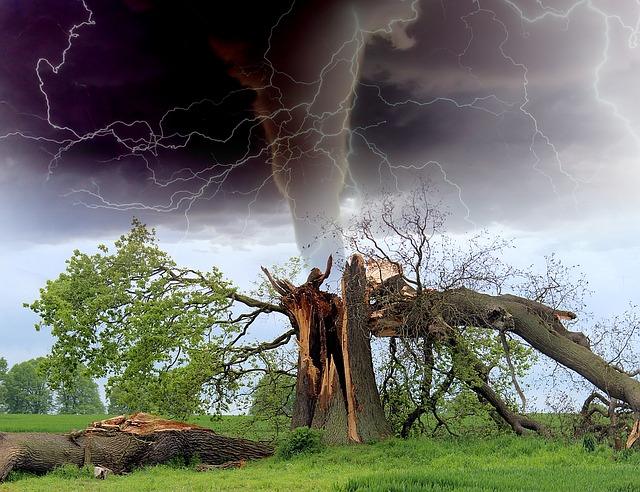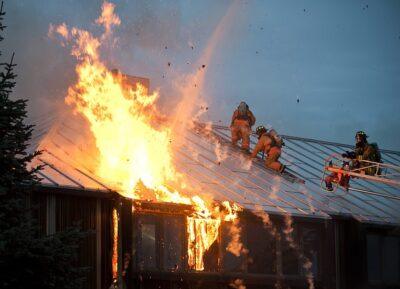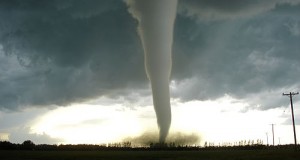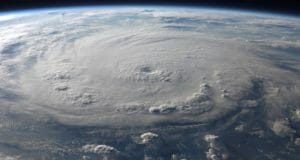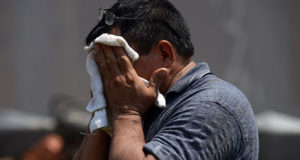Every American should take some simple steps to ensure survival in the event that a disaster strikes. You don’t need a half-million dollar underground bunker or a self-sufficient cabin deep in the mountains to prepare for a disaster.
Here are 10 simple steps every American should take to prepare for an earthquake, tornado, hurricane, wildfire, tsunami or other disaster (such as a grid-down crisis) that could disrupt society for a period of days, weeks or months. During these times, electricity, water, sewer and garbage services may not be available.
1. Water
An American family of four uses an average of 400 gallons of water per day. Much of that water is for toilets and showers. Even without those short-term amenities, each person needs about four gallons for personal use and the family needs another 10-15 gallons for cooking and cleaning. For a 30-day supply, this equals 930 gallons. Adding a little extra for manual toilet flushing gives a total of 1,000 gallons.
Ultra-Efficient Water Filter Fits In Your Pocket!
The best way to store this much water is to invest in an above-ground storage tank that can hold 1,000 gallons. If you live near a pond or river, you could supplement your water storage by investing in emergency water filters.
2. Food Storage
Families should store enough food for three months. For budget-conscious families, this doesn’t mean spending a lot of money up front. Instead, you can build up a supply of canned goods, nitrogen-packed grains like corn or rice, and freeze-dried food over a period of months.
3. Back-Up Power
A little power is a lot better than no power, especially if you live in an area where you get water from a well using a pump. Shop around for a used generator, and then hire an electrician to hook it into your home’s power supply. If the power goes down, you can then manually turn on the generator.
The generator doesn’t have to be too powerful, just enough for the basics like lights and running one household appliance. In fact, a solar generator easily could take care of much of your needs – and it doesn’t need any gas.
4. Human Waste
Without running water, toilets won’t flush automatically. However, it is easy to manually flush a toilet using a bucket of water.
If you get into a situation where water is too valuable, then dig a waste trench in your yard. It should be 2 feet by 4 feet, and located so that bacteria migrate away from sensitive areas like a garden (bacteria tend to migrate downslope). Also, purchase a bag of lime to spread over the waste after each use. This minimizes odors and flies.
5. Communications
During a disaster, not knowing what is going on, or when help will arrive, is one of the most overlooked contingencies. Purchase a manually powered radio so that you know what’s happening around you. On a more sophisticated level, you can purchase and learn how to expertly use two-way radios and ham radios.
6. Cash and Barter
Unless a disaster occurs that permanently destroys modern society, cash will have value. In an emergency setting, credit cards are useless — but cash will still work.
This is another step that can be done gradually — whether squirreling away a couple thousand immediately, or saving $10 per month — the family can build a cash reserve.
The Secret To Starting Fires In Even The Most Extreme Conditions
Also, unless the exact type of disaster is known, no one can predict exactly what will be in short supply after disaster strikes. Therefore, have some basic supplies for barter. The exact supplies depend on where you live. For example, if you live in the frigid north, extra gloves and hats may provide good barter material. If you live in the dry southwest, extra gallon jugs of water may be the best choice.
7. First Aid Training and Supplies
In an emergency setting after a disaster, chances are you’ll be engaged in a lot of physical activity. Whether this is hauling buckets of water or digging a waste trench, physical labor can lead to debilitating pain or injuries. Therefore, at least one member of the family should have advanced first aid training, and that member should be responsible for putting together a comprehensive first aid kit.
8. Documentation Package
If disaster strikes and obliterates a large metropolitan area like New York or Washington, or there’s an electromagnetic force attack that destroys electronic records, be prepared. Make sure that you have the necessary documentation to prove who you are and what assets you own. Since you won’t be carrying the documentation package everywhere you go, get a passport to serve as your identification tucked away in the package. Other important documents include bank statements, mutual funds or stock/bond statements, retirement accounts, and the deed to your property.
9. Defense
Get a gun and learn how to use it. Take self-defense classes to protect yourself. Both of these defenses are mobile and can be taken with you wherever you go.
10. Backpack
Most people who prepare for a disaster don’t want to leave their homes — that’s where their supplies are, that’s what they’re comfortable defending, and they’ve spent a lot of resources preparing for a disaster. But you may have to leave. The flood waters are rising, or that out-of-control forest fire is raging toward you, or there are armed thugs killing and taking whatever they want in your neighborhood.
So even if you can’t imagine leaving your home, you may have to. Prepare a bugout backpack, which has the absolute essentials in one location that you can grab and go. The contents of the bugout backpack depend on where you’re backup location is located. For example, if you have a plan to drive to another location, then the bugout backpack has what you need to get to that location. But let’s face it: Some people won’t have a backup location. In that case, the backpack has the necessary items to keep you hydrated, fed, warm enough and safe enough to face whatever may come next.
You don’t have to be rich or idle with time to get ready for a crisis. With a modest investment of time and money, you can diligently prepare for a disaster so that your family can survive until help arrives. As Hurricane Katrina showed, you could be waiting awhile.
What would you add to this list? Share your tips in the section below:
 Off The Grid News Better Ideas For Off The Grid Living
Off The Grid News Better Ideas For Off The Grid Living

